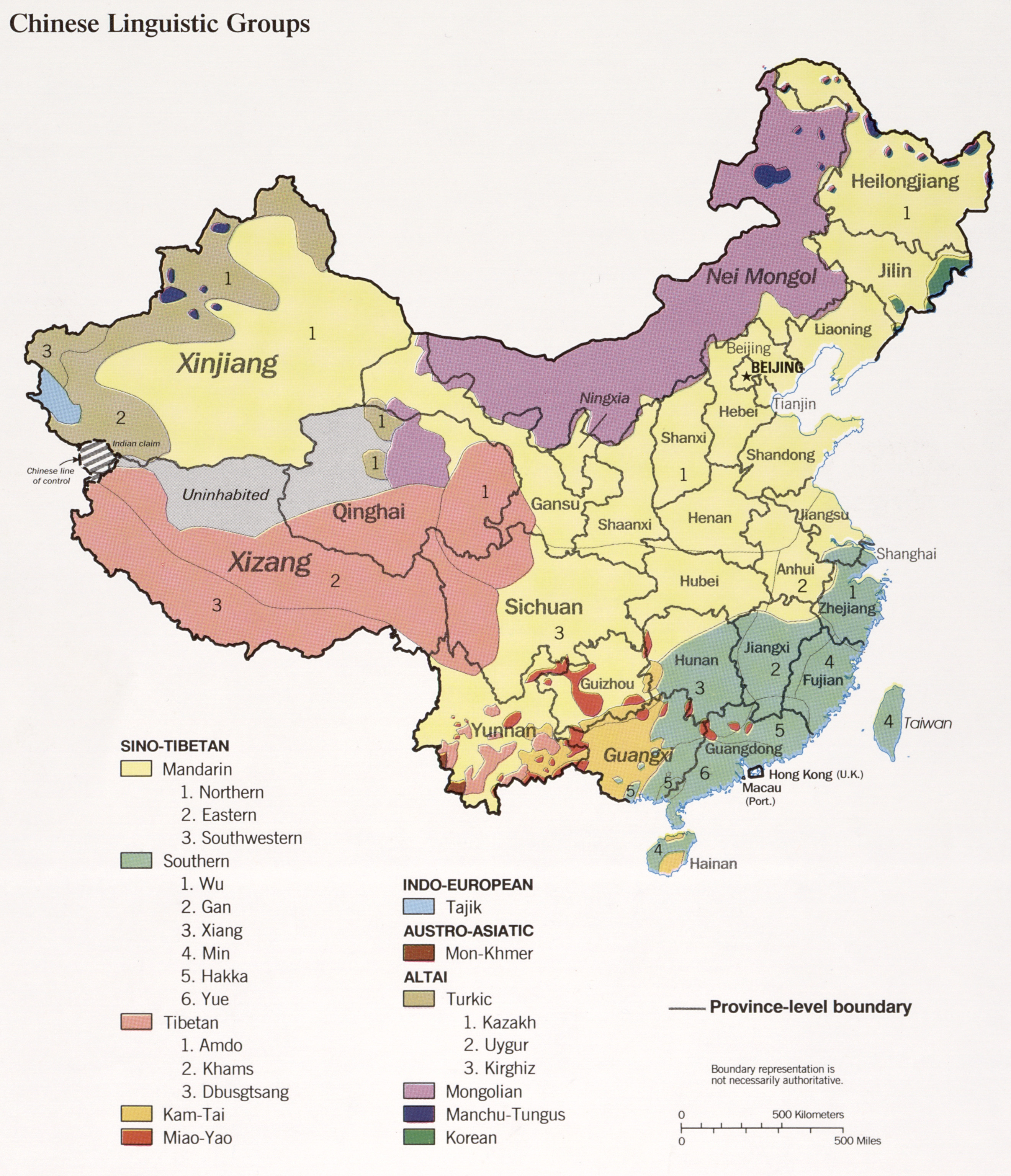China's many different ethnic groups speak many different languages, collectively called Zhōngguó Yǔwén (中国语文), literally "speech and writing of China" which mainly span six linguistic families. Most of them are dissimilar morphologically andphonetically and are mutually unintelligible. Zhongguo Yuwen includes the many different Han Chinese language variants (commonly simply called Chinese) as well as non-Han minority languages such as Mongolian, Tibetan, Uyghur and Zhuang.
Putonghua or Standard Mandarin is the official national spoken language. a standardised form of theMandarin group of dialects spoken in northern and southwestern China, which serves as a lingua franca among the different groups within mainland China.
Written
The following languages traditionally had written forms that do not involve Chinese characters (hanzi):
- The Dai - Dai language
- The Hui - Chinese language - Xiaoerjing
- The Kazakhs - Kazakh language - Arabic alphabet
- The Koreans - Korean language - Hangul
- The Kyrgyz - Kyrgyz language - Arabic alphabet
- The Manchus - Manchu language - Manchu alphabet
- The Mongolians - Mongolian language - Mongolian alphabet
- The Naxi - Dongba script/Geba script
- The Sui - Sui language - Sui script
- The Tibetans - Tibetan language - Tibetan script
- The Uyghurs - Uyghur language - Arabic alphabet
- The Xibe - Xibe language - Manchu alphabet
- The Yi - Yi language - Yi syllabary
- The Zhuang - Zhuang language - Sawgoek
Some formerly have used Chinese characters
- The Jurchens (Manchu ancestors) - Jurchen language - Jurchen script
- The Koreans - Korean language - Hanja
- The Khitans (Mongol ancestors) - Khitan language - Khitan script
- The Tanguts (Sino-tibetan people) - Tangut language - Tangut script
- The Zhuang - Zhuang language - Sawndip
Spoken
The spoken languages of nationalities that are a part of the People's Republic of China belong to at least seven families:
- The Sino-Tibetan family: 28 nationalities (including the Han, Tibetans, Miao (Hmong), and Yao)
- The Altaic family: 17
- Turkic languages: Uyghurs, Kazakhs, Salars, etc.
- Mongolic languages: Mongols, Dongxiang, and related groups
- Tungusic languages: Manchus (formerly), Hezhe, etc.
- Korean languages: Koreans
- The Austroasiatic family: 4 (the De'ang, Blang, Gin (Vietnamese), and Wa)
- The Kradai family: several languages spoken by the Zhuang, the Buyei, the Dai people, the Dong people, and the Hlai (Li people).
- The Indo-European family: 2 (the Russians and Tajiks). There is also a heavily Persian-influenced Äynu language spoken by theÄynu people in southwestern Xinjinag who are officially considered Uyghurs.
- The Austronesian family: 1 official nationality (the Gaoshan, who speak many languages), 1 unofficial (the Utsuls, who speak theTsat language but are considered Hui.)

No comments:
Post a Comment